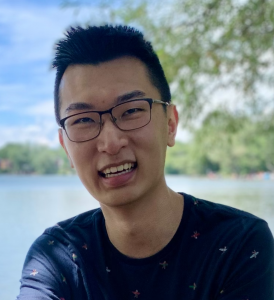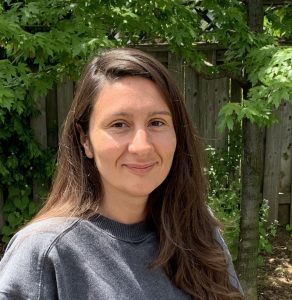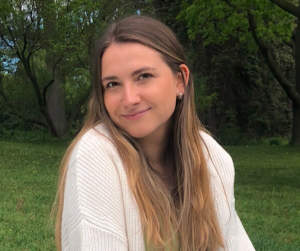by Bailey Fox
Introduction
On October 1, 2021, the Supreme Court of Canada (SCC) released its decision in Toronto (City) v Ontario (Attorney General), 2021 SCC 34 [City of Toronto]. In the 5-4 decision, the Supreme Court held that the legislation that reduced the size of Toronto City Council during an ongoing municipal election did not violate the Constitution’s guarantee of freedom of expression. The Court also held that unwritten constitutional principles cannot, on their own, invalidate legislation.
The Asper Centre intervened in the case, specifically on the issue of the scope of freedom of expression in the context of municipal elections. The decision, while resolving the immediate dispute, raises many new questions about the future of the Charter of Rights and Freedoms’ s.2(b) guarantee of freedom of expression. The divide between the majority and dissenting opinion on the role of unwritten constitutional principles also highlights the existing divide between the Supreme Court’s judges regarding Charter interpretation.
Background
On July 27, 2018, shortly after being elected, the Ontario government tabled the Better Local Government Act, SO 2018, c 11 [BLGA]. The BLGA reduced the number of wards in the City of Toronto from 47 to 25 during the City’s ongoing election. The BLGA upended the election, eliminating 22 wards and requiring candidates to pivot their campaigns to new or unfamiliar districts.
Shortly after being enacted on August 14, 2018, a number of parties, including affected candidates and the City of Toronto brought an application seeking to invalidate the BLGA. The parties advanced a few constitutional arguments, including that the BLGA violated ss.2(b) and s.15(1) (equality rights) of the Charter, as well as the unwritten constitutional principles of democracy and the rule of law. The application was heard on an expedited basis on September 9, 2018. In City of Toronto et al v Ontario (Attorney General), 2018 ONSC 5151, the application judge held that the BLGA violated both candidates’ and electors’ s.2(b) rights and could not be justified under s.1 of the Charter. Given the s.2(b) violation, the application judge held that it was not necessary to consider the role of unwritten constitutional principles. The application judge invalidated the legislation and restored the 47-ward format for the election.
The government sought an appeal, and an urgent stay, of the application judge’s decision at the Ontario Court of Appeal (OCA). In its stay decision, the OCA found that candidates were seeking a positive right to a particular platform, and held that the BLGA did not substantially interfere with expressive freedom. Based on the stay decision, the BLGA remained in force and Toronto’s election proceeded on a 25-ward basis.
A little over a year later, the appeal was heard and decided on its merits. The Asper Centre intervened in the appeal. In Toronto (City) v Ontario (Attorney General), 2019 ONCA 732, the OCA reversed the application judge’s decision and affirmed the constitutionality of the BLGA. Justice Miller, writing for the majority, characterized the claim as a positive one – that the claimants were seeking access to a statutory platform as opposed to freedom from government interference in electoral expression. Applying the case of Baier v Alberta, 2007 SCC 31 [Baier], the Court held that the claimants must demonstrate a substantial interference with freedom of expression but have failed to do so since the government is not required to ensure the effectiveness of expression.
In dissent, Justices Nordheimer and MacPherson would have denied the appeal on a finding that the BLGA violated all electoral participants’ s.2(b) rights. The dissenting justices largely adopted the submissions of the Asper Centre on this point.
The City of Toronto appealed the OCA’s decision.
The Supreme Court’s Decision
Majority
Chief Justice Wagner and Justice Brown wrote the 5-judge majority decision. Like the OCA, the SCC characterized the claim as a positive one, that is that the claimants were seeking access to a particular statutory platform (a 47-ward council). Noting that this appeal was an opportunity to ‘affirm and clarify’ the Baier framework, the Court held that when claimants are seeking to impose an obligation on the government to provide access to a statutory platform for expression, the s.2(b) claim is a positive one (para 24). In such cases, the claimant must demonstrate that lack of access to a statutory platform has substantially interfered with, or “radically frustrated”, expression to such an extent that expression is “effectively precluded” (para 26).
Applying the Baier framework, the Court held that the claim was a positive one, however the City had not demonstrated substantial interference with expression. The Court noted that the Act did not prevent candidates from engaging in political speech or impose conditions on the content or meaning of speech. The Court rejected submissions that the BLGA rendered prior campaigning meaningless, noting that government action that makes prior speech less effective is not a substantial interference with s.2(b). The Court concluded that candidates’ freedom of expression was not radically frustrated and therefore the BLGA did not violate s.2(b).
On the question of the role of unwritten constitutional principles in Charter interpretation, the Court held that these principles – like democracy and the rule of law – could be used for exactly that, and nothing more. Adopting a textual approach to constitutional interpretation, the Court held that unwritten constitutional principles represent general principles underlying the constitutional order, and while they may assist the Court as interpretative tools or to develop structural doctrine, these principles do not have independent legal force.
Dissent
Justice Abella penned the reasons on behalf of the four dissenting judges. They would have allowed the appeal based on a finding that the BLGA violated s.2(b) of the Charter.
The dissent rejected the Baier framework and would have applied the test for a s.2(b) violation from Irwin Toy Ltd v Quebec, [1989] 1 SCR 927 [Irwin Toy]. Justice Abella noted that Baier only applies to circumstances where an existing statutory platform is underinclusive, and characterized the claim in this case as government interference with expressive rights attached to an electoral process (para 151). Applying the Irwin Toy framework, Justice Abella held that the BLGA’s timing “interfered with the rights of all participants in the electoral process to engage in meaningful reciprocal political discourse” (para 157). Justice Abella held that since the government had not provided any justification for the legislation’s timing, it could not be saved under s.1.
Justice Abella also commented on the role of unwritten constitutional principles, holding that they are independent of, and form the backdrop to, the written text of the constitution. These principles represent society’s normative commitments and therefore have independent legal force. Per the dissent, in rare cases, unwritten constitutional principles may invalidate legislation that has otherwise escaped the reach of an express constitutional provision.
Where do we go from here?
The majority’s critique of Irwin Toy and affirmation of Baier is notable and perhaps concerning. The majority notes at para 14 that Irwin Toy “has been criticized for setting too low a bar for establishing a s. 2(b) limitation…”. The analysis then continues with a discussion of s.2(b)’s internal limits, the distinction between positive and negative claims, and an affirmation of Baier. While this is a legitimate and existing critique of Irwin Toy, the Court does not expand on why such a broad test is at odds with the text of s.2(b), is normatively problematic, or why or whether it should be changed. However, the Court’s decision has the effect of limiting the applicability of the Irwin Toy framework, and potentially narrowing the scope of s.2(b), and thus adding complexity to s.2(b) litigation. As noted in the dissent at para 155, claimants must now meet a preliminary burden of demonstrating that their s.2(b) claim is a negative entitlement. Adding this inquiry to the s.2(b) analysis is especially concerning given that the distinction between positive and negative entitlement is easily malleable (again, a critique noted by the dissent at para 152 and previous SCC jurisprudence).
Also of note is the very high bar the Court states is required to establish a s.2(b) violation under Baier/City of Toronto. To succeed under this framework a claimant must show that lack of access to a statutory platform has radically frustrated expression to the extent that it is effectively precluded. The substantial interference standard (which was imported from the freedom of association jurisprudence and has since been impugned in that context; see City of Toronto at para 21) thereby recognizes that some interference with expressive freedom is constitutionally permissible. City of Toronto ignites a latent question about s.2(b)’s internal limits and elevates the bar that claimants must meet if a Court considers the claim a positive one.
The decision’s discussion of unwritten constitutional principles also reflects an ongoing divide among SCC judges between a textual and liberal/purposive interpretation of the Charter. While both opinions resolved the dispute on s.2(b) grounds, they nevertheless included a sustained discussion in obiter on unwritten constitutional principles. The majority subscribes a limited role for purposive interpretation, and later notes that notes that unwritten constitutional principles may assist with constitutional interpretation, but only where the test is not sufficiently definitive (para 65). But what is notably absent is any engagement by the majority with the purpose of s.2(b), or the impact of the principle of democracy on the analysis of a case where the scope of s.2(b) is at issue. While Justice Abella recognizes that freedom of expression includes the right to engage in political discourse (paras 114 – 122), the relevance of political discourse or the election context takes a backseat in the majority’s decision. This, in addition to emphasizing the distinction between a positive and a negative claim, is a marked departure from earlier jurisprudence like Irwin Toy that emphasized the purpose of freedom of expression, and its connection to political discourse, and a broad scope for s.2(b).
In conclusion, the case that came to the Supreme Court was concerned with mid-election reform to Toronto City Council’s structure. However, in destabilizing the s.2(b) framework and narrowing the applicability of unwritten constitutional principles, the SCC’s decision leaves constitutional litigators, scholars, and students with many questions about the future of s.2(b) and constitutional interpretation.
Bailey Fox is a Research Assistant with the Asper Centre and is currently an LLM student at the University of Toronto, Faculty of Law.





 Szymon will be entering his 3L year at the University of Toronto Faculty of Law. He studied international development, politics and sociology at Trent University. Szymon is laying the groundwork for the Asper Centre’s Podcast Project. He is currently conducting research on constitutional law cases that the Asper Centre and Faculty of Law alumni have been involved in, brainstorming possible topics and case law to discuss in each new episode. Szymon also volunteers with Law in Action Within Schools (LAWS), a education program hosted by the University of Toronto Faculty of Law and Osgoode Hall Law School that provides students from four Toronto-area high schools with a variety of extracurricular opportunities related to law and justice. Szymon is an avid runner and enjoys cooking (although he also enjoys running to visit new restaurants as well!).
Szymon will be entering his 3L year at the University of Toronto Faculty of Law. He studied international development, politics and sociology at Trent University. Szymon is laying the groundwork for the Asper Centre’s Podcast Project. He is currently conducting research on constitutional law cases that the Asper Centre and Faculty of Law alumni have been involved in, brainstorming possible topics and case law to discuss in each new episode. Szymon also volunteers with Law in Action Within Schools (LAWS), a education program hosted by the University of Toronto Faculty of Law and Osgoode Hall Law School that provides students from four Toronto-area high schools with a variety of extracurricular opportunities related to law and justice. Szymon is an avid runner and enjoys cooking (although he also enjoys running to visit new restaurants as well!).

